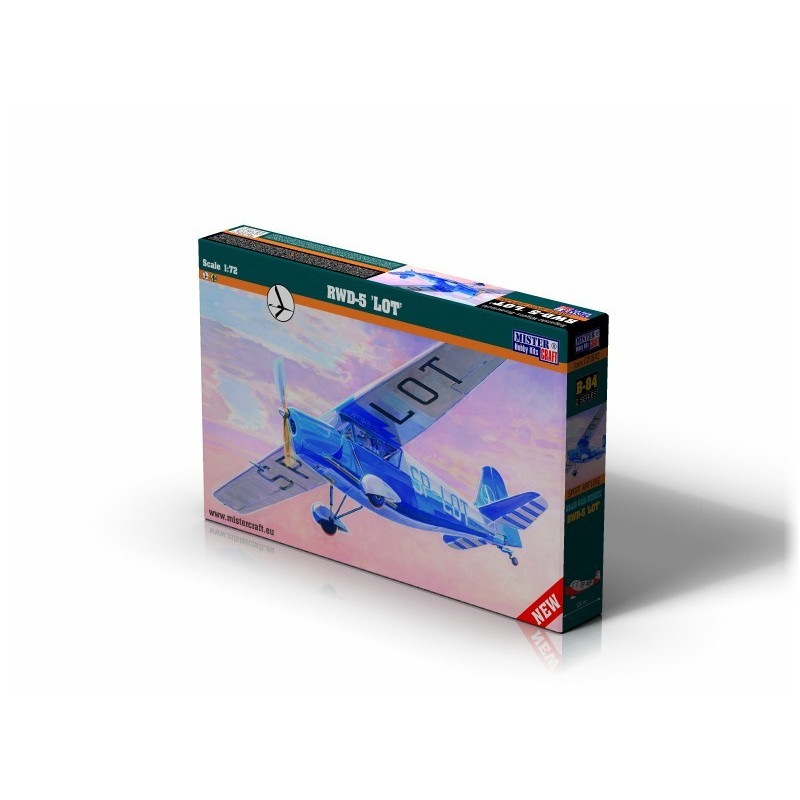- New










 Security policy(edit with the Customer Reassurance module)
Security policy(edit with the Customer Reassurance module) Delivery policy(edit with the Customer Reassurance module)
Delivery policy(edit with the Customer Reassurance module) Return policy(edit with the Customer Reassurance module)
Return policy(edit with the Customer Reassurance module)The RWD 5 was a Polish touring and sports plane of 1931, a two-seat high-wing monoplane, constructed by the RWD team. It was made famous by its transatlantic flight, being the smallest aircraft to cross the Atlantic.
The RWD 5 was constructed by the RWD team of Stanisław Rogalski, Stanisław Wigura and Jerzy Drzewiecki (their designs were named RWD after their initial letters). It was a further development of earlier RWD aircraft series (RWD 1, RWD 2, RWD 3 and RWD 7), especially of its direct predecessor, the RWD 4. It shared the same wing shape and construction, while the fuselage was totally new, constructed of steel frame, unlike its wooden predecessors. The fuselage had a modern shape and a closed canopy with panoramic windows (earlier models had atypical fish-shaped fuselages with no direct forward view from the pilot's seat).
The first prototype (registration SP-AGJ) was flown on 7 August 1931 by its designer Jerzy Drzewiecki. It was built in new workshops of Warsaw University of Technology near Okęcie airport, from 1933 converted to Doświadczalne Warsztaty Lotnicze (DWL) company.
Data sheet
Specific References
No customer reviews for the moment.